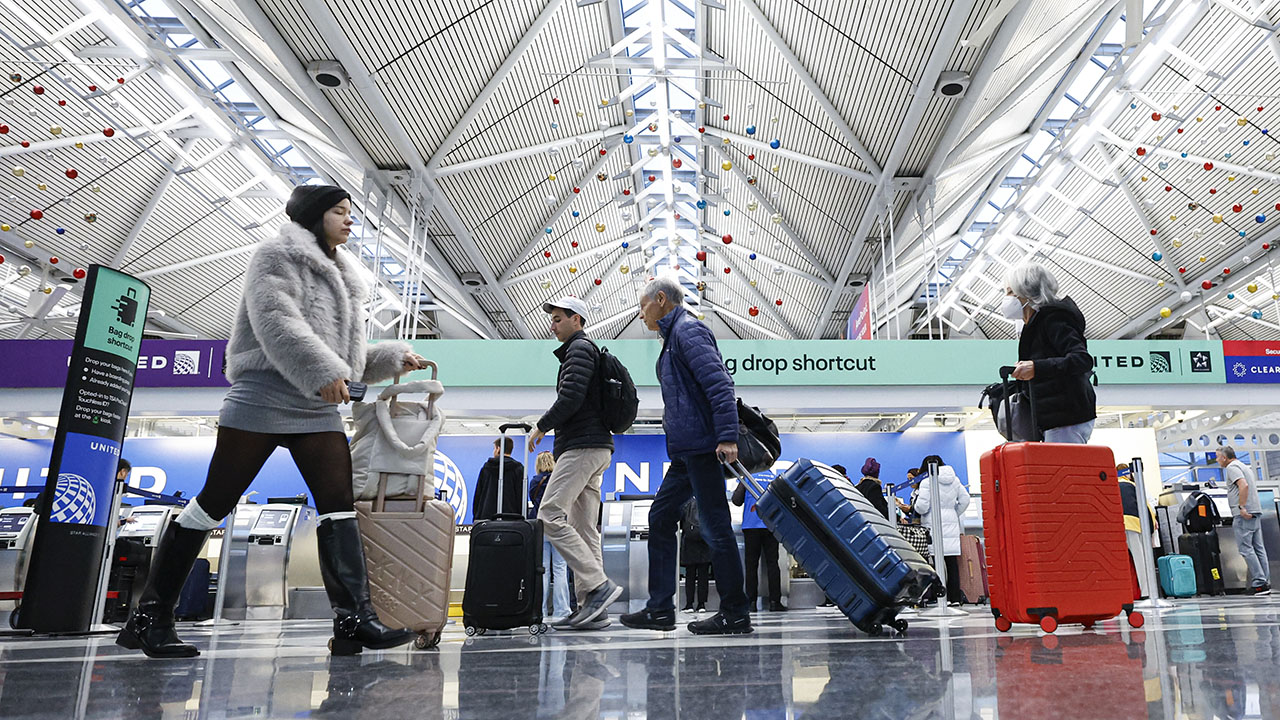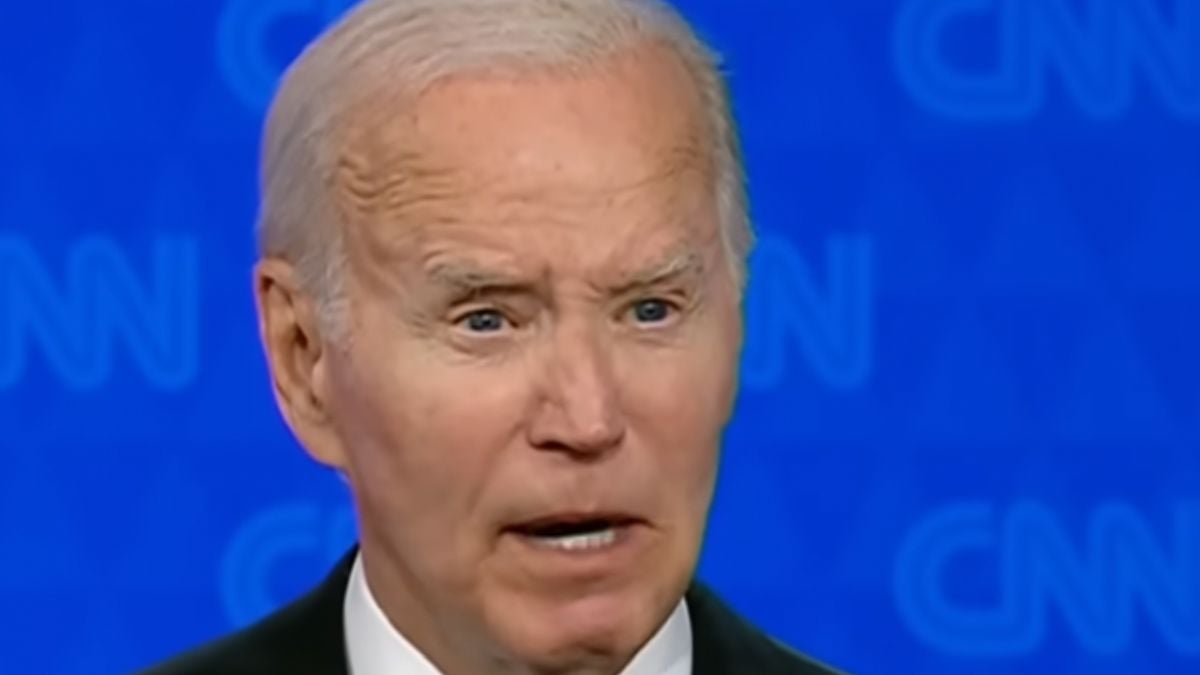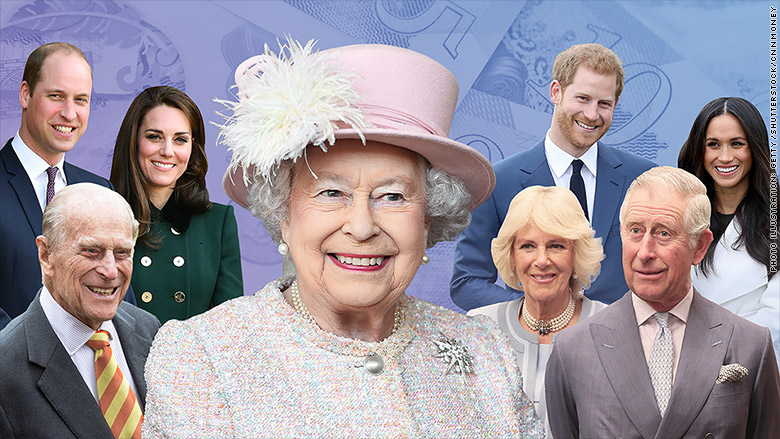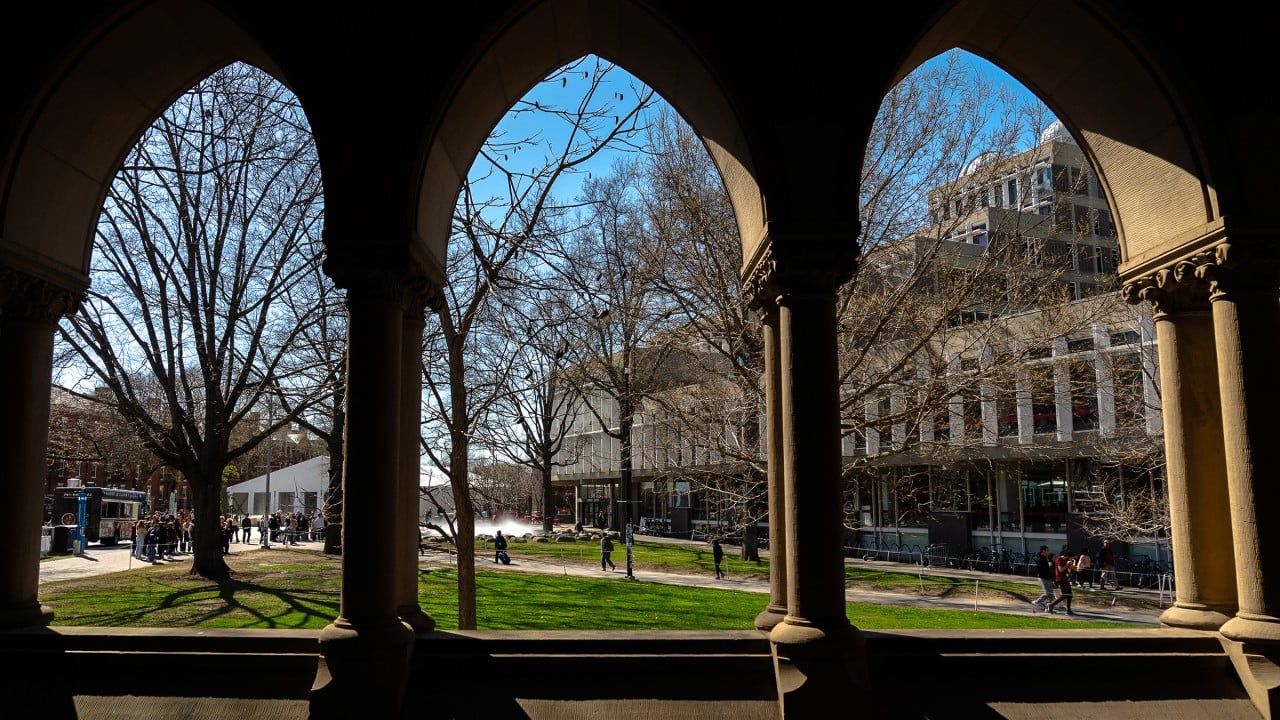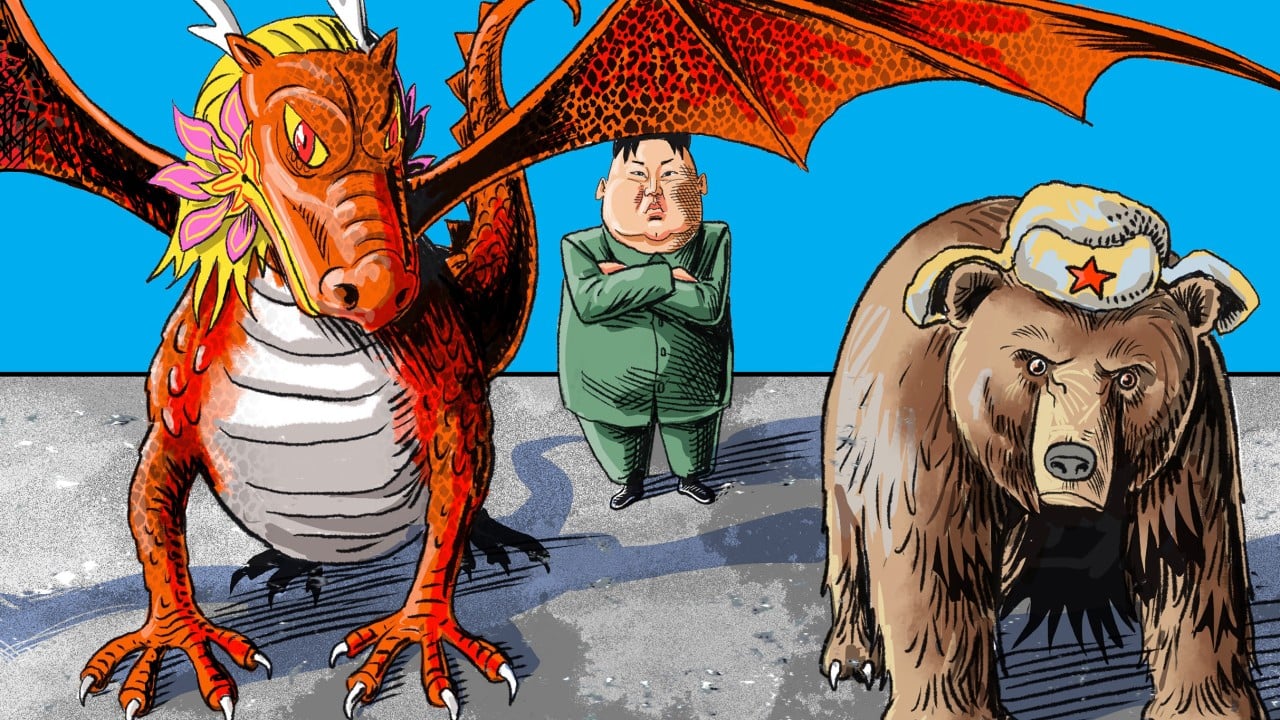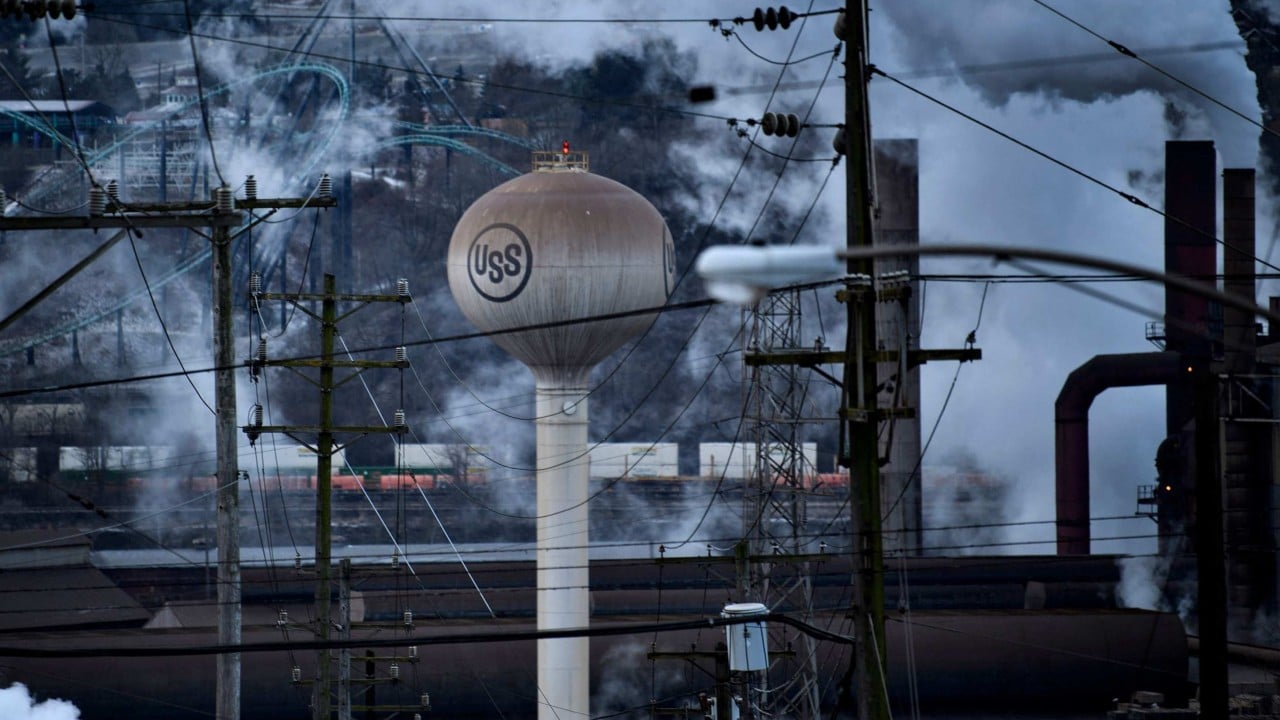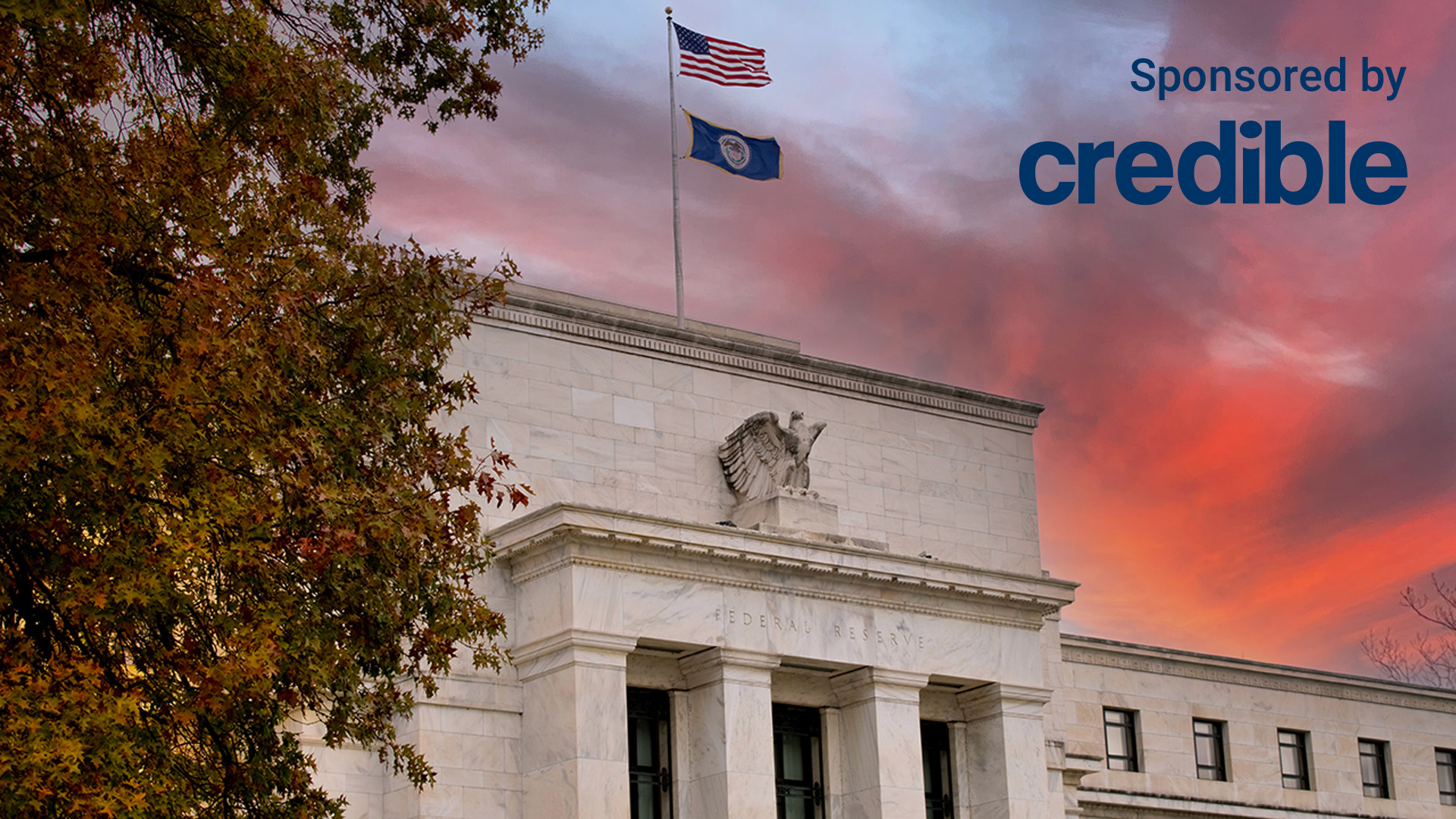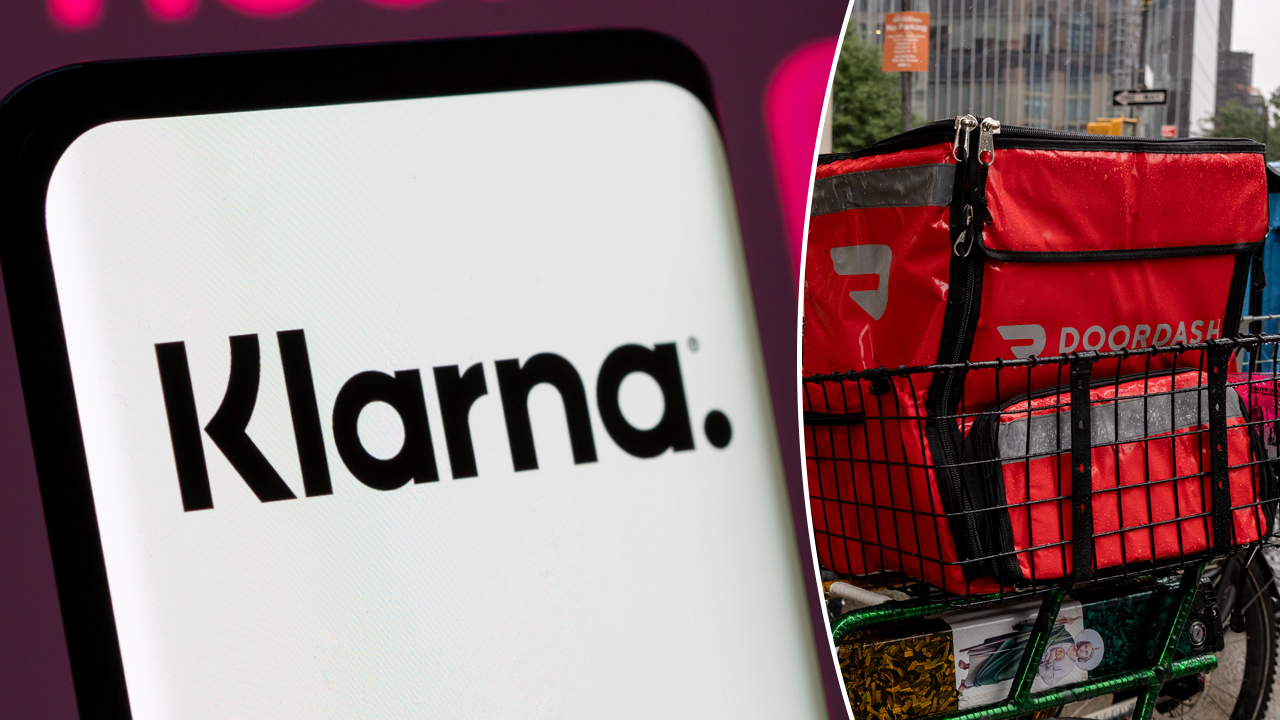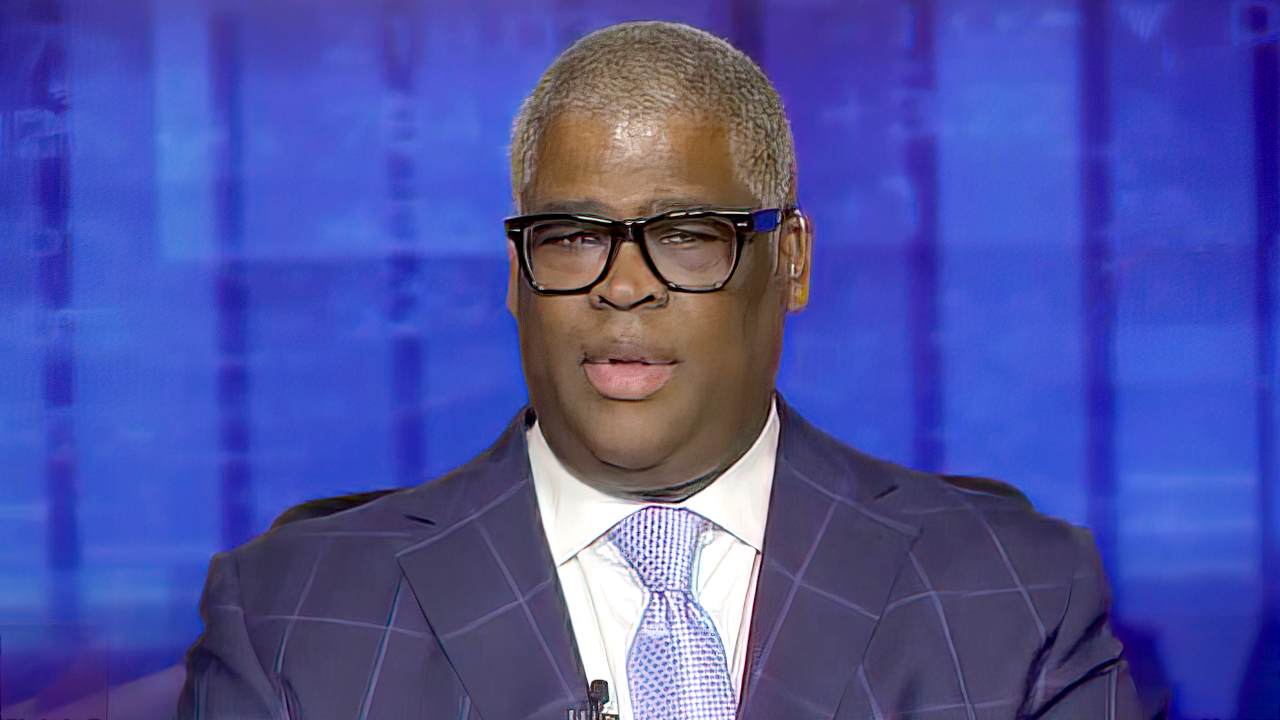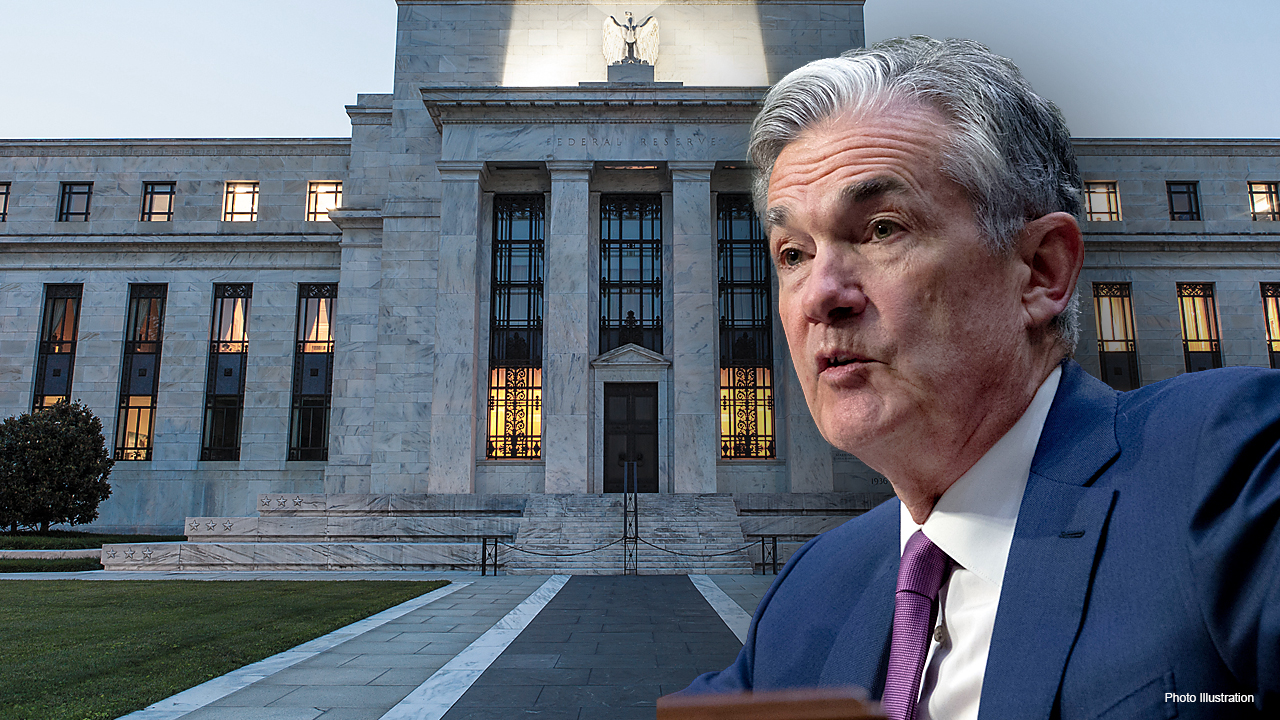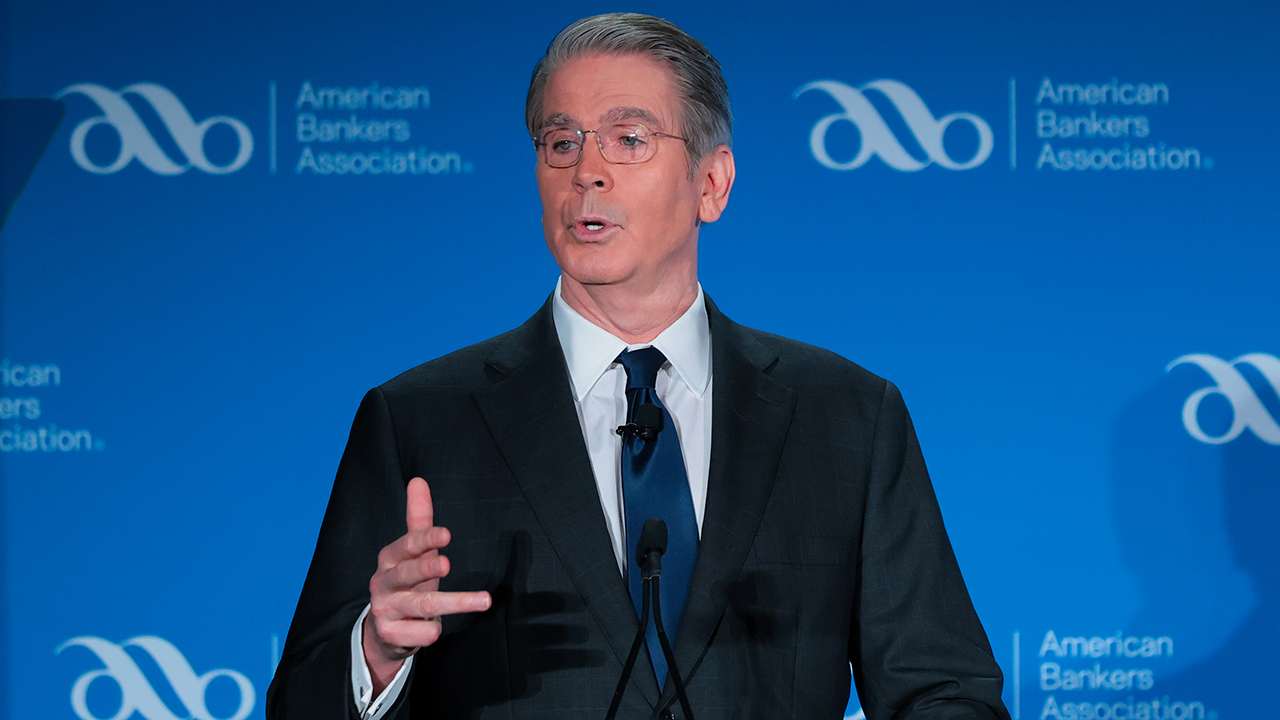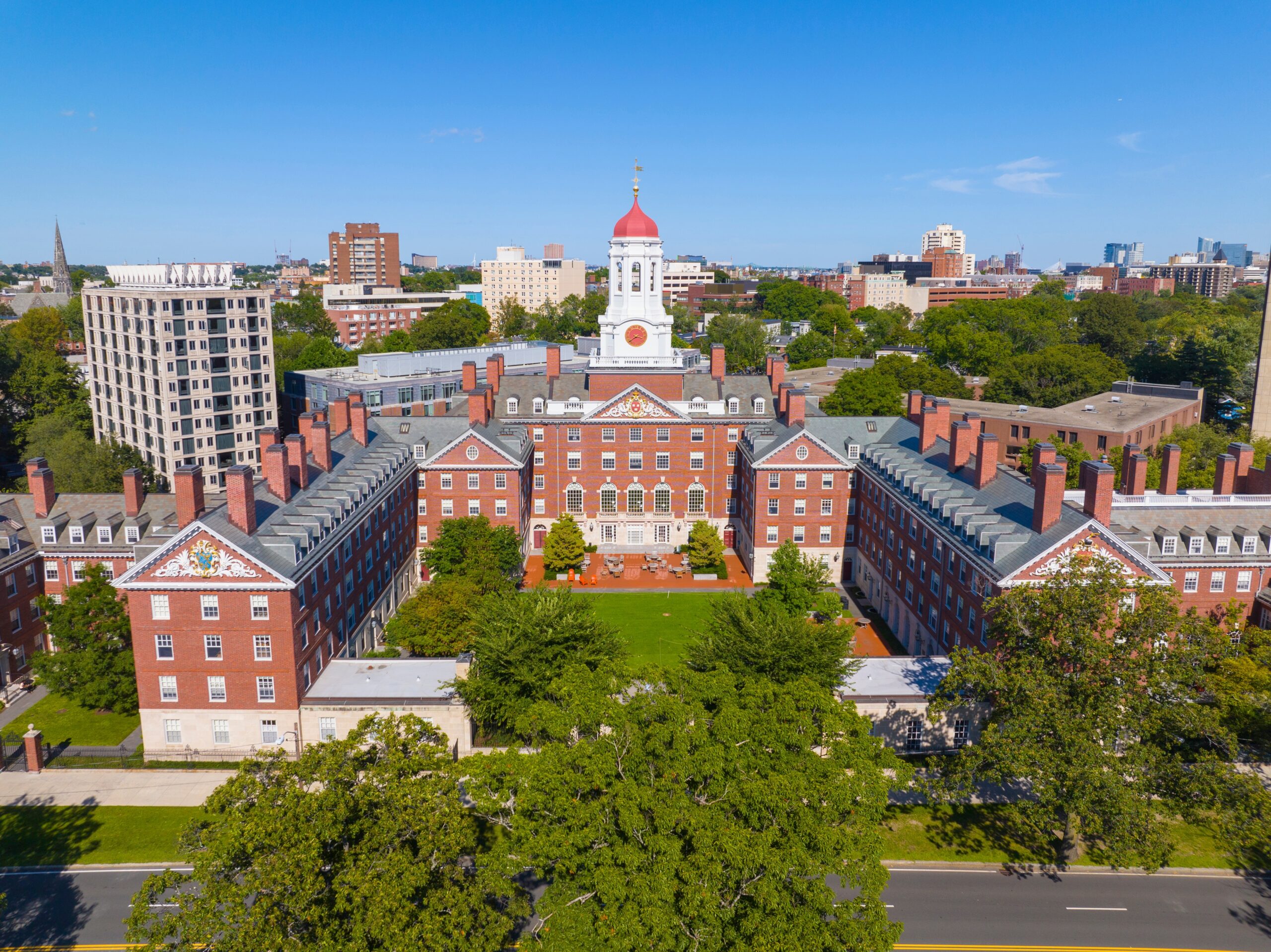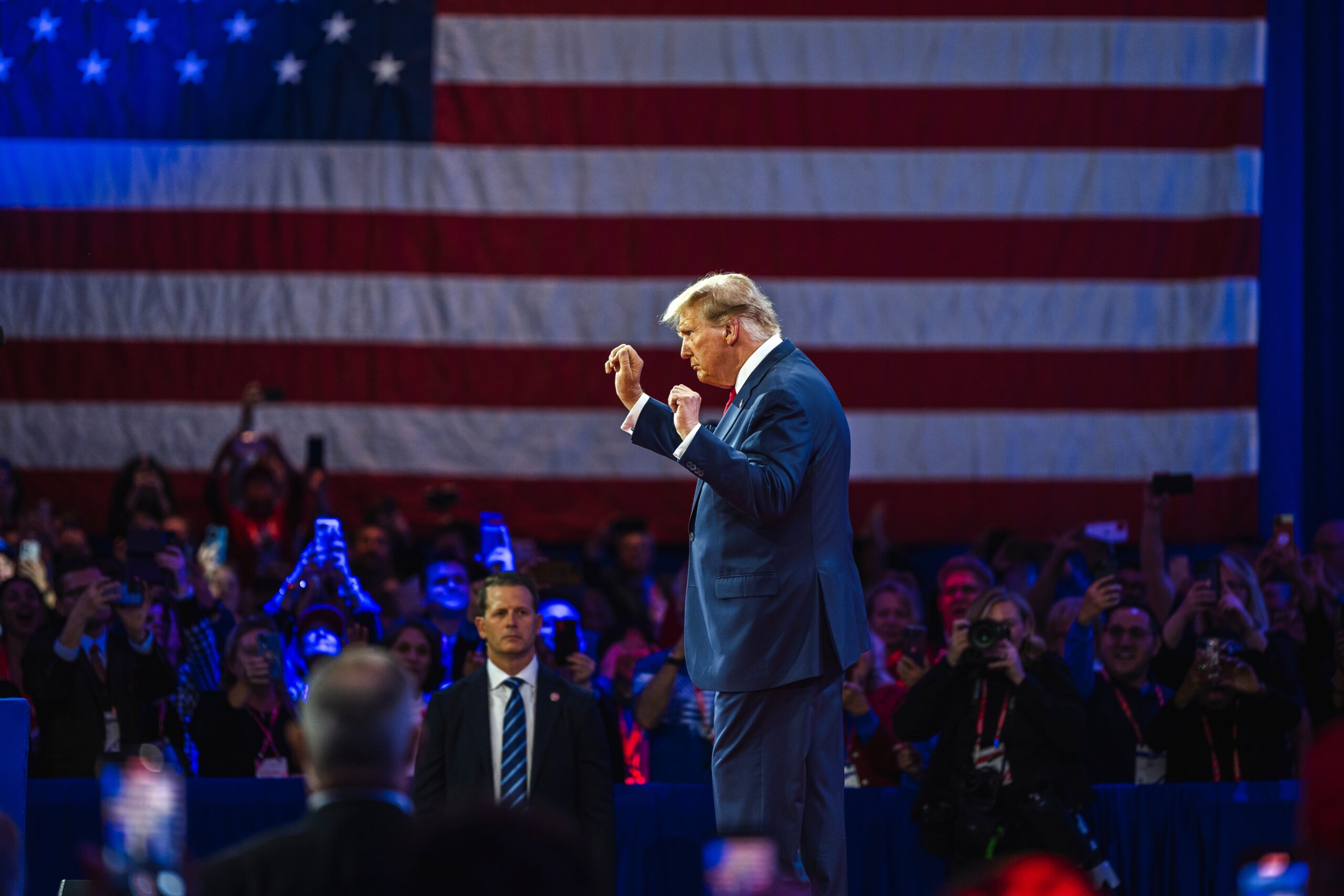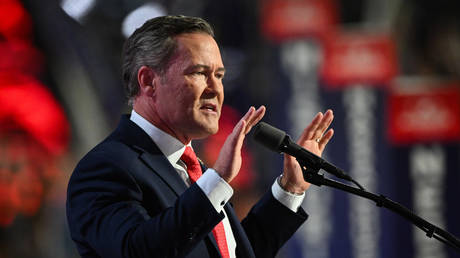Trump Is Ruining His Supporters’ Dreams

In a February interview, Senator Ruben Gallego of Arizona observed that when talking with Latino men on the campaign trail, he had been struck by their emphasis on earning money as a source of pride. As he put it in underscoring the point, “Every Latino man wants a big-ass truck.” What more perfect emblem is there for making it in the America of 2025? Now imagine how those young men Gallego spoke with might be reacting to the prospect of paying $10,000 to $12,000 more for the big-ass truck of their dreams.
President Donald Trump’s newly imposed tariff regime sent the market into free fall, wiping away trillions of dollars in a matter of days. Administration officials have largely dismissed the decline; Treasury Secretary Scott Bessent, for example, labeled it a “short-term” reaction. Others have bristled at the idea of caring about a drop in the market: Senator Eric Schmitt responded to the financial panic by saying, “America isn’t an economic zone. America isn’t a strip mall with an airport attached to it. America is a place. It’s our home. It’s our people.”
But Americans aren’t buying it. A majority—not just a wealthy few—opposed the tariffs even before they went into effect. More recent polling found a majority agreeing that “Republicans are crashing the American economy in real time and driving us to a recession.” The source of public fear and outrage is not only the 61 percent of Americans who own stocks, many of whom just saw much of their wealth evaporate. It is also the small businesses with razor-thin margins that just saw their input prices explode, and the consumers still recovering from the last round of inflation and fearful of the next.
Millions of those now alarmed by surging tariffs voted last year for Trump to return to the White House. They did this not because they wanted tariffs, but because they thought a second Trump presidency would mean fulfilling that most American of desires—the desire to get rich. Trump’s move has consolidated an anti-wealth political consensus that excludes these upwardly mobile voters. Which raises the question: Is either party brave enough to stand up for the aspirant middle?
[Annie Lowrey: The only way to stop the financial crisis]
When we refer to the American desire to get rich, we are not thinking just of insatiable one-percenters collecting second, third, and fourth homes. Most Americans care deeply about building wealth: Roughly 79 percent describe their money as “extremely” or “very” important to them. Eighty-four percent say there’s “nothing wrong” with trying to make as much money as possible, while 60 percent believe that “most rich people earned their wealth.” American parents put a far greater weight on their children being “financially independent” and having an enjoyable career than they do on those children getting married or having children themselves.
The desire to earn manifests in many admirable ways. Consider the ambitious young barista who moonlights as a ride-share driver, or the immigrant parents working the night shift to provide their kids with a better future. Think of the millions of young adults saving for a down payment for the home where they hope to raise a family. In each case, the slow but steady accumulation of wealth is part of a noble purpose. You can even think, in fact, of the one-percenters—analysis of the sources of their wealth finds that roughly 46 percent of it derives from business-related income, far more than the 26 percent coming from passive fixed-income-generating assets.
Such aspirations are nothing to be ashamed of; they’re fundamental to what makes America America. In Pew Research Center survey data from 2014, for example, 73 percent of Americans said it was “very important to work hard to get ahead in life,” compared with 60 percent of Brits and just 49 percent of Germans. And Americans continue to realize that aspiration: Federal Reserve data indicate that as of 2022, median household net worth was at its highest point on record. Measured properly, Millennials and Zoomers are in real terms wealthier than preceding generations, holding more than twice what Gen Xers did at the same age.
Belief in the importance of building wealth helped return Trump to the White House. Fed up with the inflation of the Biden years, voters backed the businessman who promised to slash regulation and bring an end to government overreach. That explains why, for instance, Trump won large majorities of voters concerned about the economy, voters shied away from Kamala Harris’s economic message, and a plurality of voters expected to be better off when Trump took office.
The desire for wealth also helps explain how Trump significantly expanded his constituency, securing not only an Electoral College victory but a plurality in the popular vote.
Consider the contrast between the coalitions that backed Trump in 2016 and 2024. In his 2016 campaign, he crucially won the support of white working-class voters in the Rust Belt who had backed Barack Obama in 2012. Many of these voters had personally experienced the economic dislocation that had followed the China trade shock of the 2000s, and were still living with the consequences.
In 2024, by contrast, Trump made major gains in large, immigrant-rich urban counties, where service-sector employment is dominant. These new, urban Trump voters were chiefly motivated by the cost of living and the ideological excesses of the cultural left, not dreams of restoring the Rust Belt to its former glory.
That explains Trump’s unexpected success among young, nonwhite, and immigrant voters—he may even have won that last group outright. Why did these previously stalwart Democrats break for Trump? Because they are all upwardly mobile groups, for whom pocket-book issues are central. More than progressive pandering, they want the opportunity to participate in the American dream—and Trump seemed to promise that.
Unfortunately, their faith is being tested. For decades, the Republican Party differentiated itself by its commitment to ambitious and enterprising workers of every social class. But over the past 10 years, a new class-war conservatism has come to the fore, arguing that “financialization” and corporate greed have hollowed out the American middle class. Drawing on leftist critiques of “late capitalism,” class-war conservatives have embraced a politics of scarcity and resentment, attempting to pit Rust Belt voters against those who have benefited most from the modernized, technologized American economy.
Class-war conservatives rely on a romanticized vision of America’s economic past. They long for a return to mass manufacturing employment. Yet working-class America has transitioned from manufacturing to service-sector employment for a reason: The jobs are, in general, of far higher quality. Being a nursing assistant or a maintenance worker can be just as challenging and meaningful as working in a 1950s coal mine, only the work is far less likely to leave you profoundly disabled. Today’s manufacturing jobs are safer, more stimulating, more productive, and more remunerative than their mid-century equivalents. Yes, there are fewer of them, as the least safe, least stimulating, least productive, and least remunerative jobs have been either automated or offshored. We can certainly try to bring the lowest-paid, most physically demanding jobs home, perhaps by rolling back domestic labor standards or imposing a new “robot tax” to deter labor-saving automation. But don’t be surprised if those jobs become a magnet for low-skill immigrants.
To the class-war conservatives, every dismaying social indicator—declining life expectancy, family breakdown, the collapsing fertility rate—somehow comes down to declining manufacturing employment in the aftermath of NAFTA or China’s accession to the World Trade Organization. The trouble is that many of these same maladies plague societies where manufacturing employment has proved more robust. You can believe that, for example, we ought to pursue economic decoupling from China without also believing that we should wage economic war on our Canadian neighbors. Dynamiting the dense web of multicountry, multifirm production networks that undergird our economy is not, in fact, our only option. Yet some on the right have black-pilled themselves about an economy that remains the envy of the world: The stock-market valuations are fake, everyone is addicted to fentanyl, and therefore we should blow everything up.
[Read: Trump has a screw loose about tariffs]
We saw the right’s new battle lines at play in the recent struggle within the Trump coalition over high-skilled immigration. On one side was the “tech right,” advocating for more high-skilled visas and the benefits they bring. On the other were the class-war conservatives, who dismissed even high-skilled immigration as a scam. But Trump voters are on the side of the former: They overwhelmingly endorse high-skilled immigration, with 71 percent supporting it in an Economic Innovation Group poll.
To their credit, some liberals have tried to fill the void created by this anti-capitalist conservatism. The Atlantic’s Derek Thompson and his co-author, Ezra Klein, have pushed for an “abundance” liberalism in their new book, which prioritizes the increase of wealth through targeted deregulation alongside traditional big-government liberalism.
[Derek Thompson: The political fight of the century]
But Democratic messaging shows what a long road the abundance liberals have to travel. House Democrats’ recent decision to highlight Representative Chris Deluzio defending tariffs was not an accident. Nor was the Biden administration’s protectionist trade agenda. The Democratic Party is systematically beholden to the unions that stand to benefit most from protection. Such structural cronyism is a feature of state-led building initiatives, meaning that any liberal move away from rent-seeking is a move away from some core constituencies.
Instead, we now have two major parties infected by the gospel of no-wealth. Both parties embrace, in Klein and Thompson’s phrasing, a “scarcity” mindset rather than an “abundance” mindset. The result? Trillions of dollars lost in a matter of days.
This is a mistake—and an opportunity. The party that becomes unabashedly, unapologetically pro-wealth-creation will position itself to capture the broad American middle that wants to get rich. That’s a coalition at least as durable as either party’s currently is.
Such a party would spurn economic protectionism and embrace free trade with our friends and allies. It would back deregulation and special-interest busting in zoning reform and right-to-work laws. It would endorse energy opportunities including solar cells and shale fracking. In short, it would propound an agenda that has at its No. 1 priority making Americans richer—like they want to be.
Just as important, such a party would not apologize for its belief in wealth; it would not shy away from the view that “greed is good.” Instead, it would forthrightly defend the idea that hard work, entrepreneurialism, and the profit motive are central to what makes our nation the greatest on Earth.
Voters backed President Trump in November because they thought, or hoped, that this was the party they would be getting. If the president wants to preserve his legacy, he still has the opportunity to give them such a party. If not, he and the GOP risk losing America’s strivers for a generation or more.
What's Your Reaction?
 Like
0
Like
0
 Dislike
0
Dislike
0
 Love
0
Love
0
 Funny
0
Funny
0
 Angry
0
Angry
0
 Sad
0
Sad
0
 Wow
0
Wow
0
































